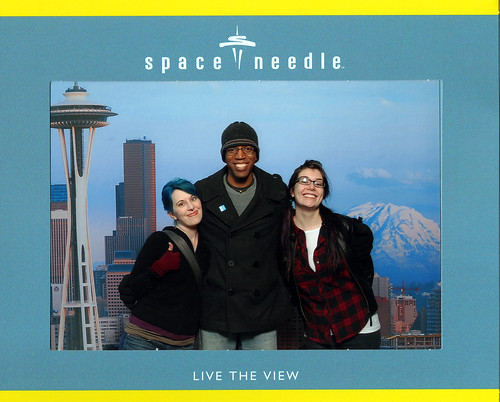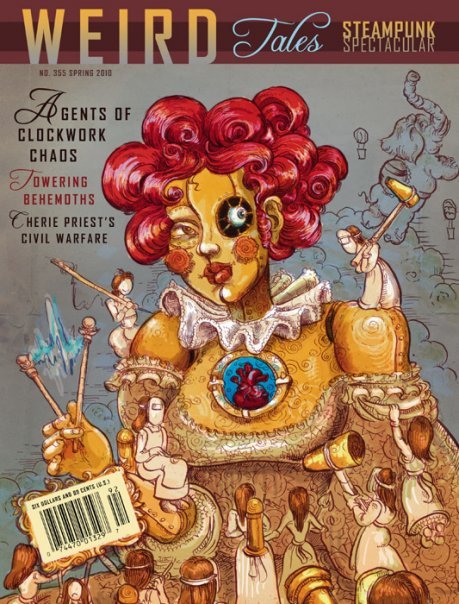God, I really hate that title. Because it shouldn’t be what this comes down to. That really should be a bit like saying Apples vs. Pears (because they aren’t quite as dissimilar as pomes and citrus, but they certainly aren’t the same) – only for the purposes of my ongoing “getting started with POD” series, it turns out that, yeah, Cafepress is probably a much better bet than Imagekind.
Which is a damned shame. Cafepress just don’t offer quite the same quality as Imagekind, nor some of the nice customization options like shape, paper choices, and frames and mats. So for the really fine artists in the room, I’m kinda saying “sorry, you’re screwed” for one-off works. But Imagekind just aren’t quite set up for one-offs and beginners, not really. They’re more of an in-between option for artists that are already shipping and printing their stuff, and want to move to a more automated system, but aren’t ready for a full-time storefront of their own.
The single biggest hurdle for any artist in any medium, starting out, is building momentum. When you first open a Cafepress or a Lulu shop, you may only make a couple of sales that first month. That’s just one of those things, you know? It might take you two, maybe even three months to hit that minimum $25 revenue required for them to cut your first check. For a book on Lulu (the smartest service out there, frankly), you’ve only got to hit a $5 minimum to get your first PayPal transfer. And, no, hell no we’re not talking making a living with $25 or $5 check, are we? But we are talking about results – and when you’re starting out? Those first tiny checks… well they fucking mean something, and rightly so, don’t they? You spend that first $5 from Lulu on a celebratory cup of coffee, because you earned it, goddamnit, and it tastes good.
It’s the little things that build and build until, a year later, you’re looking back on that first check and laughing – but you still remember it.
Imagekind, on the other hand, sets the first check (even with the PayPal option and search me as to why, it’s not like it costs them that much in processing fees) at $50.
Think about that for a second. $50. To a new artist, trying to build an audience, maybe only marking things up a buck just to get their stuff out there, that could take anywhere up to six months. And let’s be honest – how many people do you think completely lose momentum waiting for that first $50 to clear? Right. Or maybe they do make $60 that first month… followed by a frustrating four months of $47 more dollars that, let me tell you, would buy a lot of ramen. But it may as well not even be there, and I’ll bet you $50 that there are hundreds of abandoned Imagekind accounts permanently locked at somewhere between $10 and $49. Which isn’t so bad for the company, I guess – but you can bet none of those sellers are recommending the service to their friends.
Which probably explains why Imagekind have a couple thousand twitter followers, and Cafepress, Lulu, and even Zazzle are all closer to ten grand each.
The shame of it is that Imagekind and Cafepress are apparently under the same umbrella, and besides the difference in payout minimums, Cafepress are a much more intuitive backend, too. Some of that is just the difference between multiple products and one basic product in different sizes, but some of that’s just weird intent on the part of the interface developers, I think. (And I really wish there were a bit more integration between the two services than some confusing links out on Cafepress and the Cafepress logo on the Imagekind header. But that’s a pretty common scenario in the wake of early ‘00s buy-outs, and doesn’t really factor into this review.)
And (and Cafepress is no good at this, either, but) is it really that hard to set up a markup settings page where totals update as you type in the markup, instead of having to save, close, reopen, check the totals, and save again? I might just have been spoiled by Lulu and Zazzle, but man would that save some time and headache.
But, again, I think Imagekind are set up for people that already have a system, prices, etc, and just want to transfer that to an online system with offsite fulfillment.
I do want to say very nice things about whoever is running Imagekind’s twitter account – within moments of my tweet mentioning them and the word “difficult,” they responded to me. And not in that creepy twitterbot sort of way, they actually followed up after. So someone at the company is clearly engaging with the public, and that goes a long way for my opinion of a company. And I’ve seen the quality of their prints (very nice), and have nothing but good things to say about their costs and fulfillment. Like I say, as a solution for someone that wants to move selling prints out of their office and stop stuffing envelopes themselves? Sure thing – Imagekind are probably one of the better online solutions out there (before you get into the really high-volume fulfillment centers and print shops).
But for the people that have been asking me where they can go to start out – to test the waters of online print sales? I really think I have to recommend Cafepress’ posters. You’re only going to get three size options (medium, large, and whoa), and one paper and not the best quality… but you can branch out the products you offer, and you’re going to get your first check before you run out of steam. And believe me, I know how big a deal that is, and how much that little bit of encouragement goes to keeping the creativity going. And that keeping yourself going and making new things is how you’re going to make 2025 the year you finally start Really Making Things, isn’t it just?
But, sure, for the Getting There artists and photographers that are at that in-between point where you’ve got people asking you all the time for prints, and you’re looking at getting your own printers and postage but that seems just out of reach, yet – Imagekind may be right for you. I know a bunch of the pros in the room just gasped a bit, at that – and, honestly, they’re right to do so. If you can afford (and your business is at the point where it makes sense) to do your own printing and shipping, you are going to make more money once you pay off your set-up costs. But setting up with a service that handles printing and fulfillment is a good halfway step that can pay for that fancy gajillion dpi printer, and make sure that’s the route you want to take. And, you know, if time is a huge factor (if you’re still rocking the day job and trying to market prints, too) that’s another consideration.
So too if you’ve been doing prints for a while, but you’re only really pulling in a hundred or so a month, and you really just want to phase out the envelope stuffing in favor of some bigger and more time consuming project. Something like Imagekind is probably a great way to keep up the quality (again, they really are nice prints) and quantity of your print sales, while putting some of your time into something else.
For me, I’m not too disappointed that my own Imagekind account is very likely going to be one of those abandoned accounts with (well) less than $50. Sometime around or after the New Year I may move some Venn stuff over to a Cafepress store if folks ask for it (EDIT: Why the hell not?), but like I said a couple posts back, I was more looking for an excuse to try Imagekind out and post about them than anything – so no great loss to me. (Although, for the Venn image, I won’t be doing Cafepress posters, just because their size options don’t suit the image, so I will leave the Imagekind print shop up – it’s not like there’s any reason to close it. *Edited, see end of post.) For any future (real) projects, though: no, I don’t think they’ll find a home with anything fancier than Cafepress.
But I did get a nice long post out of the experiment and, if I’m lucky, I saved some of you some time or at least gave you a good chunk of info to add to your own toolboxes, yeah? And that’s what it’s about.
(And, you know, I did get a couple Art and Science Venns out into the wild, too, and that still makes me grin, hehe, thank you!)
*Edit: Bradley Schenck (Who would know better than I would, as he’s been doing this for years. I know you’ve seen his lovely RETROPOLIS merchandise, which I’ve been enamored with since I saw it a linked couple of years ago on… some site. Maybe a Project Wonderful ad? Regardless, it’s good stuff, and you should go take a look if you haven’t) sent me an email this morning to correct my “only three sizes” comment about Cafepress:
I’ve been following your POD posts, and I have an observation about the latest one. You mention that Cafepress posters come in only three sizes: but the way it actually works is that those three sizes are each a *maximum* size, and the poster can be trimmed to any size smaller than that.
So, for example: if you create an image that’s the right resolution and aspect ratio for an 18 x 24" poster, you create a new "Large Poster". Its *maximum* size is 23" x 35". Then you add the image to your new poster product, and select the correct image height from a dropdown list. If you then select "No Border" from the next dropdown, the system knows that the poster should be trimmed to 18 x 24".
This has had bugs from time to time, but it seems to be working now – with the minor annoyance that the product image and thumbnail are smaller than they should be, because blank space is left in the image for the trimmed margin.
Which I had completely missed on my first look at the Cafepress poster templates, so thanks, Bradley! There’s one more point to Cafepress.











